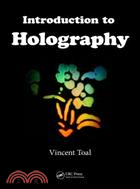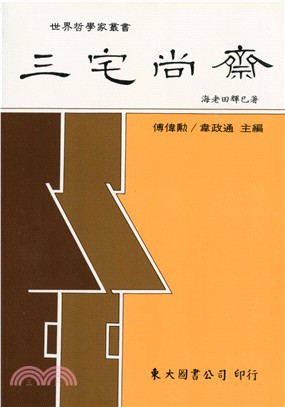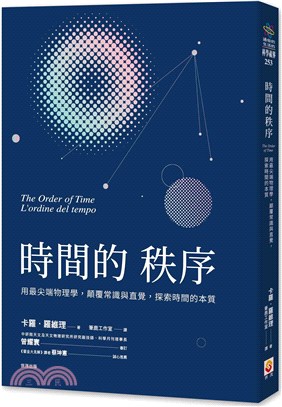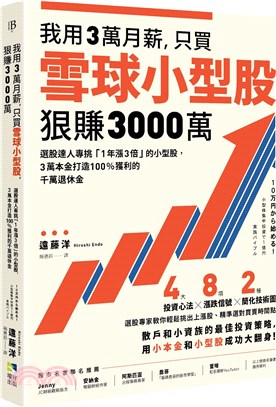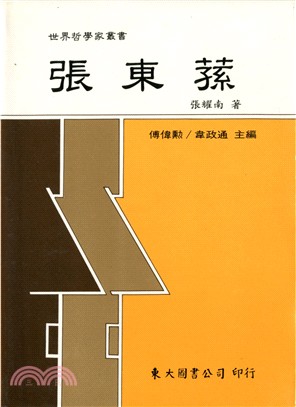定價
:NT$ 9450 元優惠價
:90 折 8505 元
若需訂購本書,請電洽客服 02-25006600[分機130、131]。
相關商品
商品簡介
作者簡介
目次
商品簡介
Over the course of its 60-year history, holography has enabled new insights into the nature of light and has contributed to innovative applications, including many unrelated to optics. Introduction to Holography explains how to use holographic techniques to solve specific problems in a variety of fields. The text focuses on the state of development of existing and emerging holographic applications. Numerical problems are provided at the end of each chapter.
After a review of essential optics, the book presents basic holographic principles. It introduces the theory of thick holograms, along with a less demanding and more insightful path to important results based on the work of Jacques Ludman. Examining the use of holography in practice, the author then describes the conditions for successful holography in the laboratory, including various lasers commonly used for holography. He also discusses recording materials and their key holographic characteristics. The final portion of the book deals with applications of holography, including imaging, holographic interferometry, holographic optical elements, and data storage. The text also explores digital and computer-generated holography, light-in-flight and first-arriving light techniques and their applications, polarization holography, and holography for sensing applications.
Since its invention in 1948, holography has evolved into a mature technology with a wide range of applications. This practical guide to the field offers a comprehensive survey of contemporary holographic techniques and applications.
After a review of essential optics, the book presents basic holographic principles. It introduces the theory of thick holograms, along with a less demanding and more insightful path to important results based on the work of Jacques Ludman. Examining the use of holography in practice, the author then describes the conditions for successful holography in the laboratory, including various lasers commonly used for holography. He also discusses recording materials and their key holographic characteristics. The final portion of the book deals with applications of holography, including imaging, holographic interferometry, holographic optical elements, and data storage. The text also explores digital and computer-generated holography, light-in-flight and first-arriving light techniques and their applications, polarization holography, and holography for sensing applications.
Since its invention in 1948, holography has evolved into a mature technology with a wide range of applications. This practical guide to the field offers a comprehensive survey of contemporary holographic techniques and applications.
作者簡介
Vincent Toal is director of the Center for Industrial and Engineering Optics at the Dublin Institute of Technology. A fellow of the Institute of Physics, Dr. Toal has taught optics for over 20 years. He earned a Ph.D. in electronic engineering from the University of Surrey.
目次
OPTICSLight, Waves, and RaysIntroductionDescription of light wavesSpatial frequencyThe equation of a plane waveNonplanar wavefrontsGeometrical opticsReflection, refraction, and the Fresnel equationsIntroduction to spatial filtering
Physical OpticsIntroductionDiffractionDiffraction and spatial Fourier transformationPhase effect of a thin lensFourier transformation by a lensFourier transform property of a lens—a physical argumentInterference by division of amplitudeCoherencePolarized light
PRINCIPLES OF HOLOGRAPHYIntroducing HolographyIntroduction: difference between two spatial frequenciesRecording and reconstruction of a simple diffraction gratingGeneralized recording and reconstruction A short history of holographySimple theory of holographyPhase conjugacyPhase holograms
Volume HolographyIntroductionVolume holography and coupled-wave theoryCharacteristics of thick holographic gratingsRigorous coupled-wave theoryA simpler approach
HOLOGRAPHY IN PRACTICERequirements for HolographyIntroduction Coherence The Michelson interferometerLasers The Fabry–Perot interferometer, etalon, and cavityStimulated emission and the optical amplifierLaser systemsQ-switched lasersFrequency doubled lasersMode locking of lasersSpatial coherence of lasersLaser safetyMechanical stability Thermal stabilityChecking for stabilityResolution of the recording material
Recording MaterialsIntroductionSilver halide Dichromated gelatin (DCG) ThermoplasticsPhotoresistsSelf-processing materialsHolographic sensitivity
Recording Materials in PracticeIntroductionNonlinear effectsGrain noiseThe speckle effectSignal-to-noise ratio in holographyExperimental evaluation of holographic characteristicsEffects arising from dissimilarities between reference beams in recording and reconstruction
APPLICATIONSHolographic DisplaysIntroductionSingle-beam holographic displaySplit-beam holographic displaysBenton hologramsWhite light (Denisyuk) hologramsWide field holographyColor hologramsDynamic holographic displaysVery large format holographic displaysQuantum entanglement holography—imaging the inaccessibleGood practice in hologram recording
Other Imaging ApplicationsIntroductionHolographic imaging of three-dimensional spacesFurther applications of phase conjugationMultiple imagingTotal internal reflection and evanescent wave holographyEvanescent waves in diffracted lightMass copying of holograms
Holographic Interferometry IntroductionBasic principlePhase change due to object displacementFringe localizationLive fringe holographic interferometryFrozen fringe holographic interferometryCompensation for rigid body motion accompanying loadingDouble pulse holographic interferometryHolographic interferometry of vibrating objectsStroboscopic methodsHolographic surface profilometryPhase conjugate holographic interferometryFringe analysisSpeckle pattern interferometry
Holographic Optical ElementsIntroductionDiffraction gratingsSpectral filtersLensesBeam splitters and beam combinersScannersLighting control and solar concentratorsMultiplexing and demultiplexingOptical interconnectsHolographic projection screensPhotonic bandgap devicesHolographic polymer-dispersed liquid crystal devices
Holographic Data Storage and Information ProcessingIntroductionHolographic data storage capacityBit format and page formatStorage mediaMultiplexingPhase-coded dataError avoidanceExposure schedulingData and image processingOptical logicHolographic optical neural networksQuantum holographic data storage
Digital Holography IntroductionSpatial frequency bandwidth and sampling requirementsRecording and numerical reconstructionSuppression of the zero-order and the twin imageImproving the resolution in digital holographyDigital holographic microscopyOther applications of digital holography
Computer-Generated HologramsIntroductionMethods of representationThree-dimensional objectsOptical testingOptical traps and computer-generated holographic optical tweezers
Holography and the Behavior of LightIntroductionTheory of light-in-flight holographyReflection and other phenomenaExtending the recordApplications of light-in-flight holography
Polarization HolographyIntroductionDescription of polarized lightJones vectors and matrix notationStokes parametersPhotoinduced anisotropyTransmission polarization holographyReflection polarization holographic gratingsPhotoanisotropic recording materials for polarization holographyApplications of polarization holography
Holographics Sensors and IndicatorsIntroductionBasic principlesTheoryPractical sensors and indicatorsSensors based on silver halide and related materialsPhotopolymer-based holographic sensors and indicatorsSensing by hologram formation
Appendix A: The Fresnel–Kirchoff IntegralAppendix B: The Convolution Theorem
A Summary, References, and Problems appear at the end of each chapter.
Physical OpticsIntroductionDiffractionDiffraction and spatial Fourier transformationPhase effect of a thin lensFourier transformation by a lensFourier transform property of a lens—a physical argumentInterference by division of amplitudeCoherencePolarized light
PRINCIPLES OF HOLOGRAPHYIntroducing HolographyIntroduction: difference between two spatial frequenciesRecording and reconstruction of a simple diffraction gratingGeneralized recording and reconstruction A short history of holographySimple theory of holographyPhase conjugacyPhase holograms
Volume HolographyIntroductionVolume holography and coupled-wave theoryCharacteristics of thick holographic gratingsRigorous coupled-wave theoryA simpler approach
HOLOGRAPHY IN PRACTICERequirements for HolographyIntroduction Coherence The Michelson interferometerLasers The Fabry–Perot interferometer, etalon, and cavityStimulated emission and the optical amplifierLaser systemsQ-switched lasersFrequency doubled lasersMode locking of lasersSpatial coherence of lasersLaser safetyMechanical stability Thermal stabilityChecking for stabilityResolution of the recording material
Recording MaterialsIntroductionSilver halide Dichromated gelatin (DCG) ThermoplasticsPhotoresistsSelf-processing materialsHolographic sensitivity
Recording Materials in PracticeIntroductionNonlinear effectsGrain noiseThe speckle effectSignal-to-noise ratio in holographyExperimental evaluation of holographic characteristicsEffects arising from dissimilarities between reference beams in recording and reconstruction
APPLICATIONSHolographic DisplaysIntroductionSingle-beam holographic displaySplit-beam holographic displaysBenton hologramsWhite light (Denisyuk) hologramsWide field holographyColor hologramsDynamic holographic displaysVery large format holographic displaysQuantum entanglement holography—imaging the inaccessibleGood practice in hologram recording
Other Imaging ApplicationsIntroductionHolographic imaging of three-dimensional spacesFurther applications of phase conjugationMultiple imagingTotal internal reflection and evanescent wave holographyEvanescent waves in diffracted lightMass copying of holograms
Holographic Interferometry IntroductionBasic principlePhase change due to object displacementFringe localizationLive fringe holographic interferometryFrozen fringe holographic interferometryCompensation for rigid body motion accompanying loadingDouble pulse holographic interferometryHolographic interferometry of vibrating objectsStroboscopic methodsHolographic surface profilometryPhase conjugate holographic interferometryFringe analysisSpeckle pattern interferometry
Holographic Optical ElementsIntroductionDiffraction gratingsSpectral filtersLensesBeam splitters and beam combinersScannersLighting control and solar concentratorsMultiplexing and demultiplexingOptical interconnectsHolographic projection screensPhotonic bandgap devicesHolographic polymer-dispersed liquid crystal devices
Holographic Data Storage and Information ProcessingIntroductionHolographic data storage capacityBit format and page formatStorage mediaMultiplexingPhase-coded dataError avoidanceExposure schedulingData and image processingOptical logicHolographic optical neural networksQuantum holographic data storage
Digital Holography IntroductionSpatial frequency bandwidth and sampling requirementsRecording and numerical reconstructionSuppression of the zero-order and the twin imageImproving the resolution in digital holographyDigital holographic microscopyOther applications of digital holography
Computer-Generated HologramsIntroductionMethods of representationThree-dimensional objectsOptical testingOptical traps and computer-generated holographic optical tweezers
Holography and the Behavior of LightIntroductionTheory of light-in-flight holographyReflection and other phenomenaExtending the recordApplications of light-in-flight holography
Polarization HolographyIntroductionDescription of polarized lightJones vectors and matrix notationStokes parametersPhotoinduced anisotropyTransmission polarization holographyReflection polarization holographic gratingsPhotoanisotropic recording materials for polarization holographyApplications of polarization holography
Holographics Sensors and IndicatorsIntroductionBasic principlesTheoryPractical sensors and indicatorsSensors based on silver halide and related materialsPhotopolymer-based holographic sensors and indicatorsSensing by hologram formation
Appendix A: The Fresnel–Kirchoff IntegralAppendix B: The Convolution Theorem
A Summary, References, and Problems appear at the end of each chapter.
主題書展
更多
主題書展
更多書展本週66折
您曾經瀏覽過的商品
購物須知
外文書商品之書封,為出版社提供之樣本。實際出貨商品,以出版社所提供之現有版本為主。部份書籍,因出版社供應狀況特殊,匯率將依實際狀況做調整。
無庫存之商品,在您完成訂單程序之後,將以空運的方式為你下單調貨。為了縮短等待的時間,建議您將外文書與其他商品分開下單,以獲得最快的取貨速度,平均調貨時間為1~2個月。
為了保護您的權益,「三民網路書店」提供會員七日商品鑑賞期(收到商品為起始日)。
若要辦理退貨,請在商品鑑賞期內寄回,且商品必須是全新狀態與完整包裝(商品、附件、發票、隨貨贈品等)否則恕不接受退貨。




